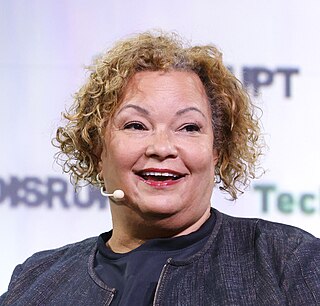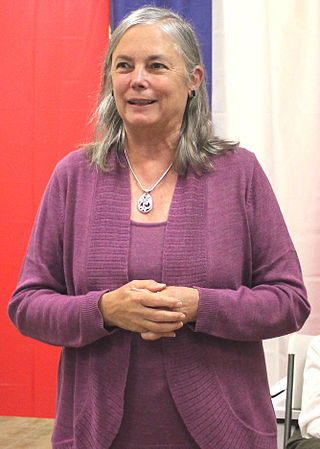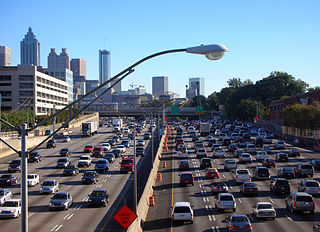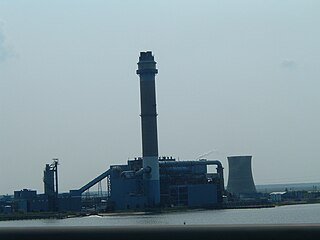Related Research Articles

The Environmental Protection Agency (EPA) is an independent agency of the United States government tasked with environmental protection matters. President Richard Nixon proposed the establishment of EPA on July 9, 1970; it began operation on December 2, 1970, after Nixon signed an executive order. The order establishing the EPA was ratified by committee hearings in the House and Senate.
The California Air Resources Board is an agency of the government of California that aims to reduce air pollution. Established in 1967 when then-governor Ronald Reagan signed the Mulford-Carrell Act, combining the Bureau of Air Sanitation and the Motor Vehicle Pollution Control Board, CARB is a department within the cabinet-level California Environmental Protection Agency.
A State Implementation Plan (SIP) is a United States state plan for complying with the federal Clean Air Act, administered by the Environmental Protection Agency (EPA). The SIP, developed by a state agency and approved by EPA, consists of narrative, rules, technical documentation, and agreements that an individual state will use to control and clean up polluted areas.

Lisa Perez Jackson is an American chemical engineer who served as the administrator of the United States Environmental Protection Agency (EPA) from 2009 to 2013. She was the first African American to hold that position.

The Air Pollution Control Act of 1955 was the first U.S. federal law to address the national environmental problem of air pollution. This was "an act to provide research and technical assistance relating to air pollution control". The act "left states principally in charge of prevention and control of air pollution at the source". The act declared that air pollution was a danger to public health and welfare, but preserved the "primary responsibilities and rights of the states and local government in controlling air pollution".
The Bay Area Air Quality Management District (BAAQMD) is a public agency that regulates the stationary sources of air pollution in the nine counties of California's San Francisco Bay Area: Alameda, Contra Costa, Marin, Napa, San Francisco, San Mateo, Santa Clara, southwestern Solano, and southern Sonoma. The BAAQMD is governed by a 24-member Board of Directors composed of elected officials from each of the nine Bay Area counties. The board has the duty of adopting air pollution regulations for the district. It is one of 35 Air Quality Management Districts in California.
The Global Warming Solutions Act of 2006, or Assembly Bill (AB) 32, is a California state law that fights global warming by establishing a comprehensive program to reduce greenhouse gas emissions from all sources throughout the state. AB32 was co-authored by Assemblymember Fran Pavley and Speaker of the California Assembly Fabian Nunez and signed into law by Governor Arnold Schwarzenegger on September 27, 2006.

Frances J. "Fran" Pavley is an American politician who served two terms in the California State Senate and three terms in the California State Assembly. A Democrat, she last represented the 27th Senate District, which encompasses the Conejo Valley, and portions of the San Fernando and Santa Clarita Valleys. Due to term limits in California, Senator Pavley completed her legislative career in 2016. She is currently working as the Environmental Policy Director for the USC Schwarzenegger Institute.
The South Coast Air Quality Management District, also using the acronym South Coast (AQMD), formed in 1976, is the air pollution agency responsible for regulating stationary sources of air pollution in the South Coast Air Basin and the Coachella Valley portion of the Salton Sea Air Basin, in Southern California. The separate California Air Resources Board is responsible for regulating mobile sources (e.g. vehicles) in the air basin.

The United States produced 5.2 billion metric tons of carbon dioxide equivalent greenhouse gas (GHG) emissions in 2020, the second largest in the world after greenhouse gas emissions by China and among the countries with the highest greenhouse gas emissions per person. In 2019 China is estimated to have emitted 27% of world GHG, followed by the United States with 11%, then India with 6.6%. In total the United States has emitted a quarter of world GHG, more than any other country. Annual emissions are over 15 tons per person and, amongst the top eight emitters, is the highest country by greenhouse gas emissions per person.
United States vehicle emission standards are set through a combination of legislative mandates enacted by Congress through Clean Air Act (CAA) amendments from 1970 onwards, and executive regulations managed nationally by the Environmental Protection Agency (EPA), and more recently along with the National Highway Traffic Safety Administration (NHTSA). These standard cover common motor vehicle air pollution, including carbon monoxide, nitrogen oxides, and particulate emissions, and newer versions have incorporated fuel economy standards.
Title 40 is a part of the United States Code of Federal Regulations. Title 40 arranges mainly environmental regulations that were promulgated by the US Environmental Protection Agency (EPA), based on the provisions of United States laws. Parts of the regulation may be updated annually on July 1.

The Clean Air Act (CAA) is the United States' primary federal air quality law, intended to reduce and control air pollution nationwide. Initially enacted in 1963 and amended many times since, it is one of the United States' first and most influential modern environmental laws.
To protect the environment from the adverse effects of pollution, many nations worldwide have enacted legislation to regulate various types of pollution as well as to mitigate the adverse effects of pollution. At the local level, regulation usually is supervised by environmental agencies or the broader public health system. Different jurisdictions often have different levels regulation and policy choices about pollution. Historically, polluters will lobby governments in less economically developed areas or countries to maintain lax regulation in order to protect industrialisation at the cost of human and environmental health.

Air quality laws govern the emission of air pollutants into the atmosphere. A specialized subset of air quality laws regulate the quality of air inside buildings. Air quality laws are often designed specifically to protect human health by limiting or eliminating airborne pollutant concentrations. Other initiatives are designed to address broader ecological problems, such as limitations on chemicals that affect the ozone layer, and emissions trading programs to address acid rain or climate change. Regulatory efforts include identifying and categorising air pollutants, setting limits on acceptable emissions levels, and dictating necessary or appropriate mitigation technologies.

The California State Water Resources Control Board (SWRCB) is one of six branches of the California Environmental Protection Agency.
The California Statewide Truck and Bus Rule was initially adopted in December 2008 by the California Air Resources Board (CARB) and requires all heavy-duty diesel trucks and buses that operate in California to retrofit or replace engines in order to reduce diesel emissions. All privately and federally owned diesel-fueled trucks and buses, and privately and publicly owned school buses with a gross vehicle weight rating (GVWR) greater than 14,000 pounds, are covered by the regulation.
Margo T. Oge is an American engineer and environmental regulator who served as the director of the Environmental Protection Agency's Office of Radiation and Indoor Air from 1990 to 1994 and director of the Office of Transportation and Air Quality from 1994 to 2012. Beginning in 2009, Oge lead the EPA team that authored the 2010-2016 and the 2017-2025 Light-Duty Vehicle Greenhouse Gas Emissions Standards. By 2025, these rules require automakers to halve the greenhouse gas emissions of cars and light duty trucks while doubling fuel economy. These rules were the US federal government's first regulatory actions to reduce greenhouse gases.

New Jersey Air Pollution Control Law consists of legislative and regulatory measures intended to limit the amount of harmful substances found in the air. In New Jersey, the federal Clean Air Act and the state Air Pollution Control Act (1954) are the most significant pieces of air pollution control legislation. These laws are implemented and enforced by the New Jersey Department of Environmental Protection (NJDEP).
References
- ↑ "VCAPCD - Air Quality". www.vcapcd.org.
- ↑ "VCAPCD - Air Pollution Control Board". www.vcapcd.org.
- ↑ "VCAPCD - Hearing Board". www.vcapcd.org.
- ↑ "VCAPCD - Advisory Committee". www.vcapcd.org.